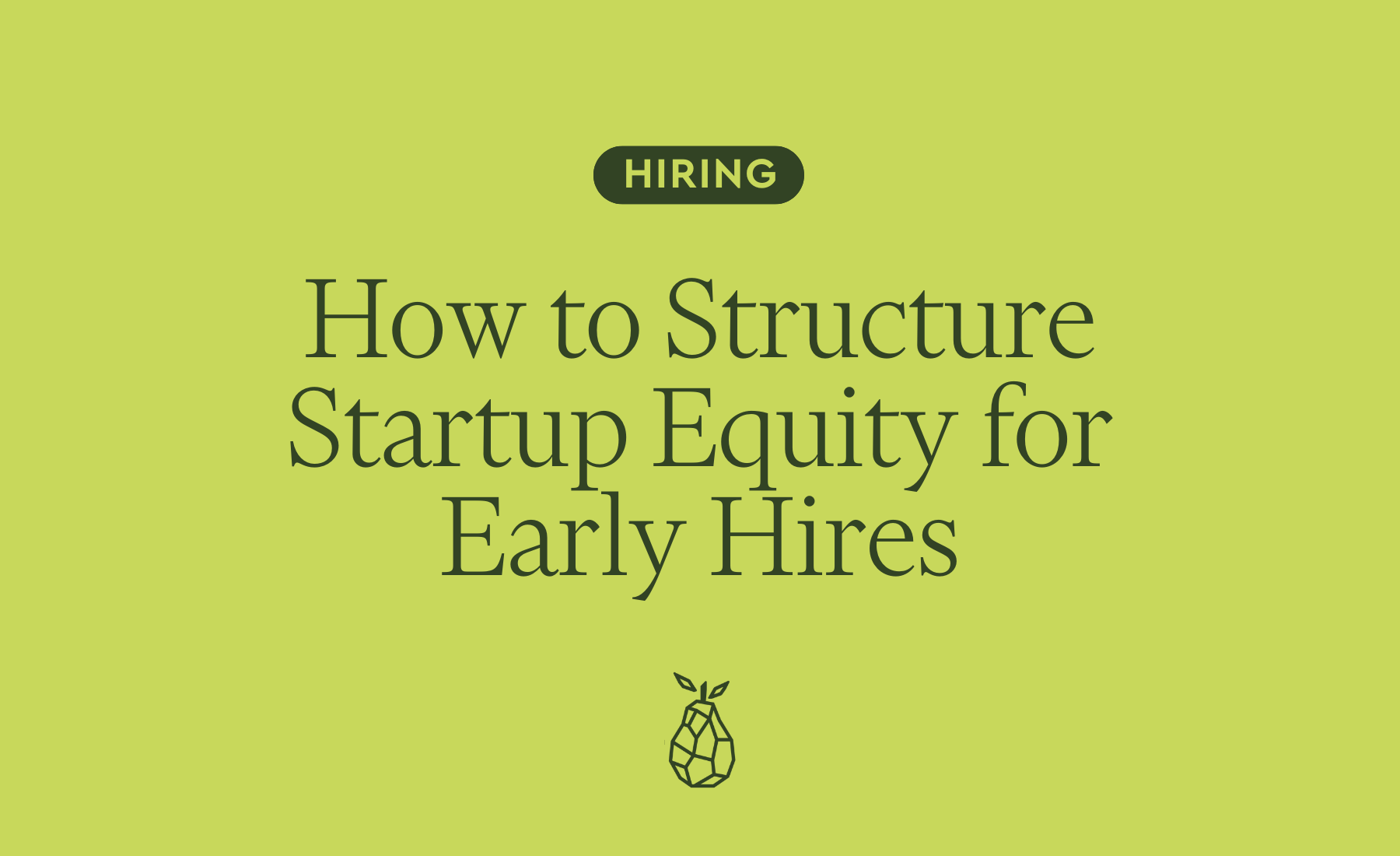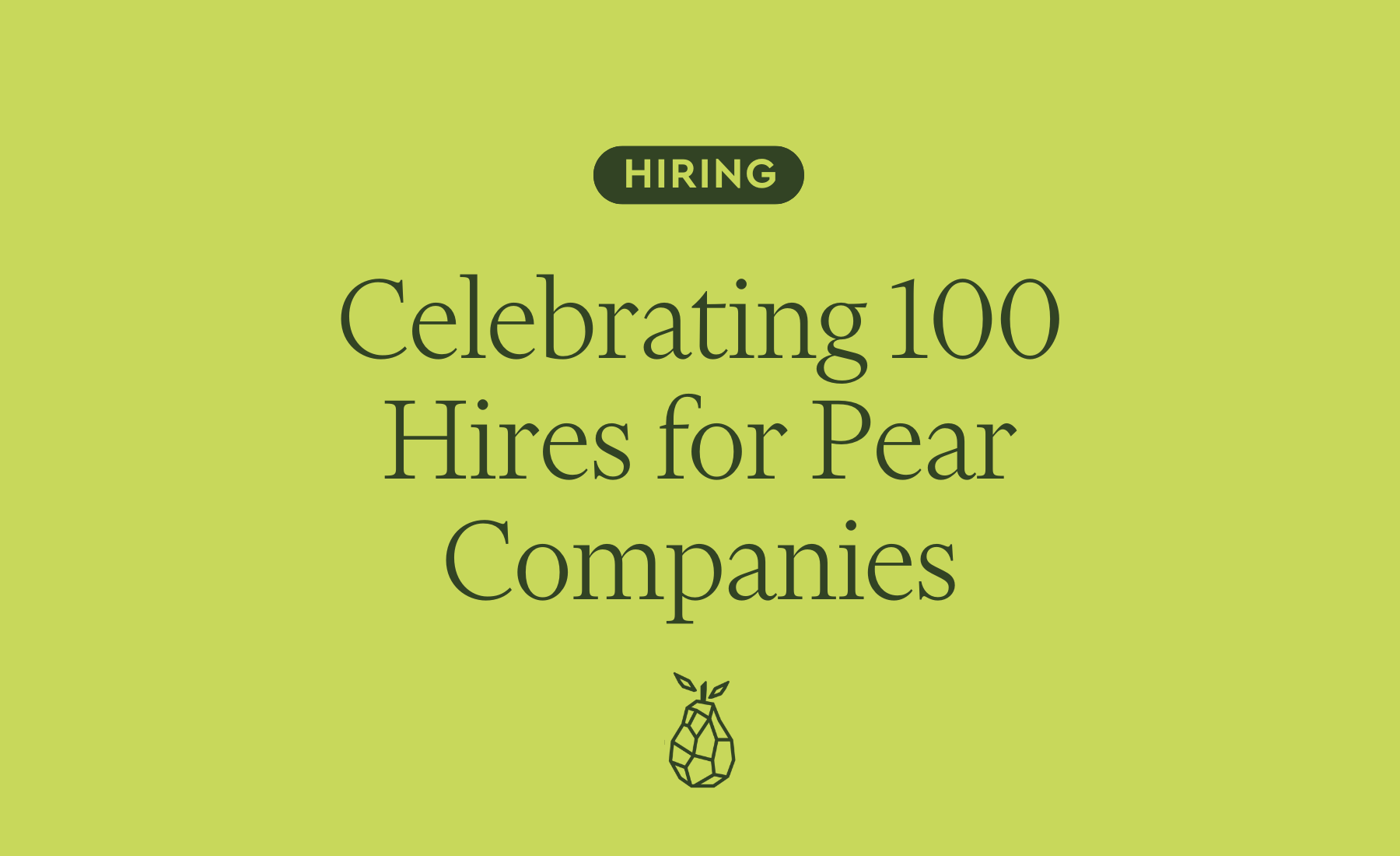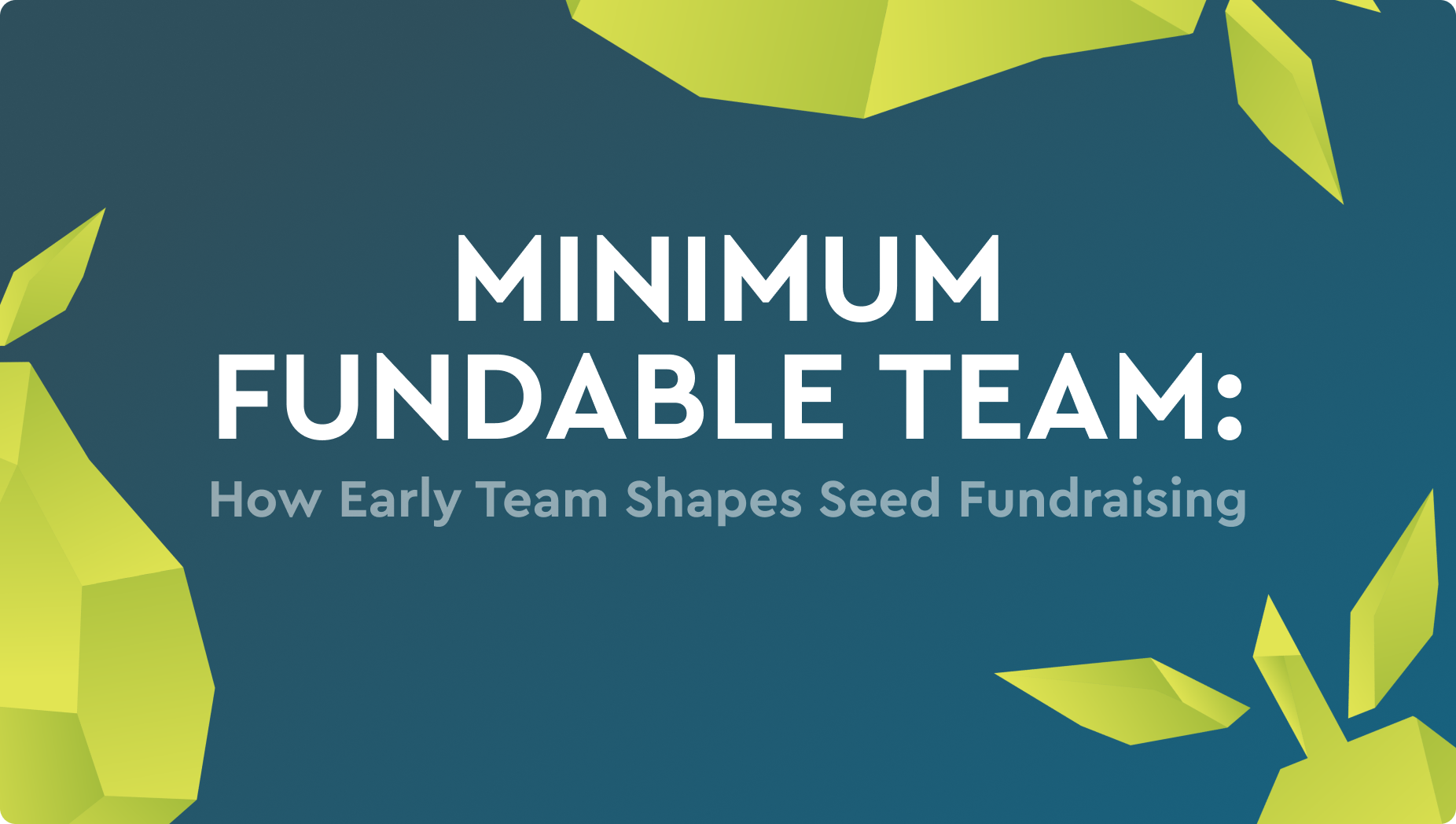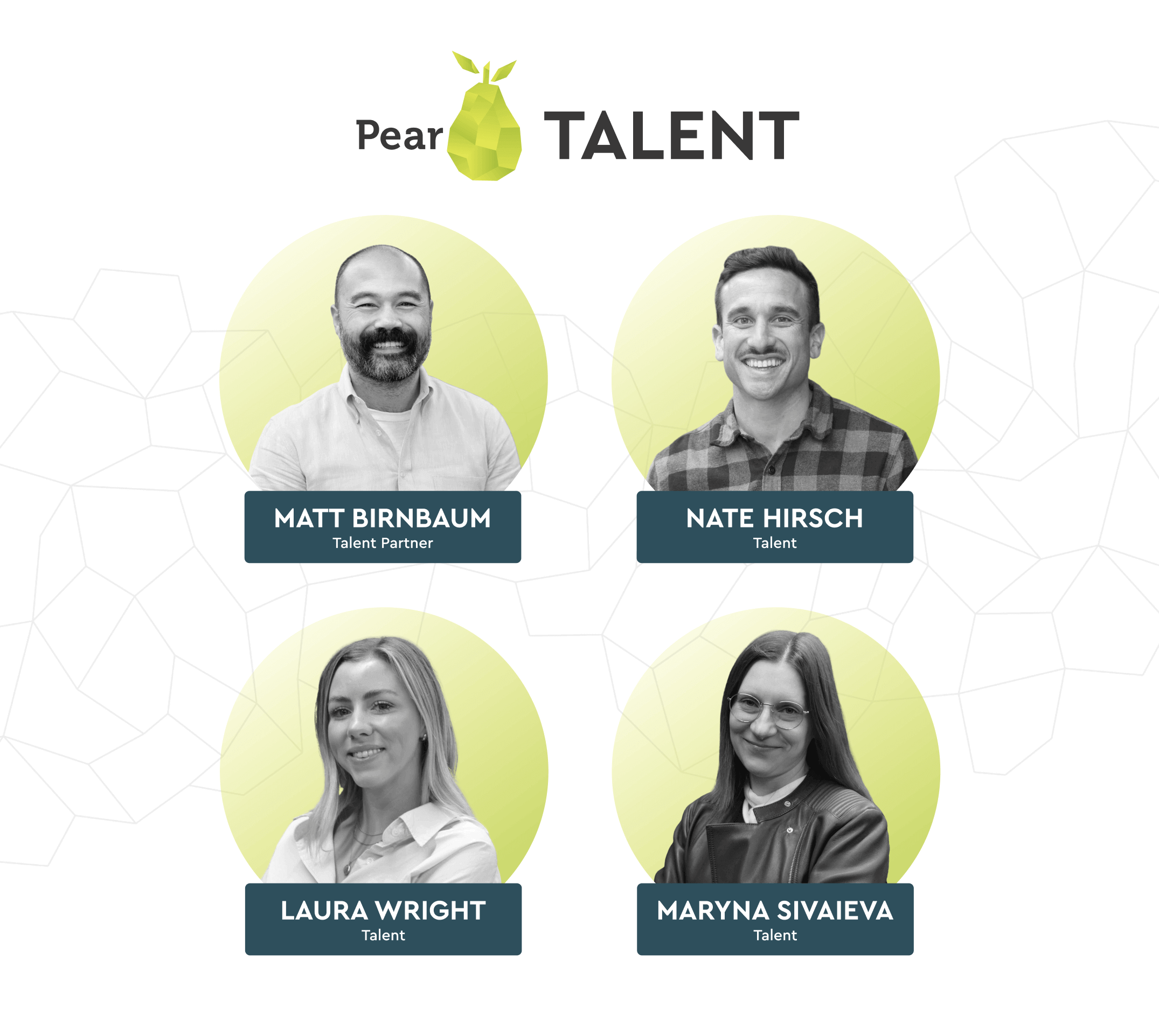As a member of the Talent team at Pear, one of my primary responsibilities is assisting early-stage founders with their first hires. Each month, we receive dozens of inquiries from founders about how to best structure equity compensation for their first hires. Although there is a wealth of information available on this topic, we have yet to find a resource that effectively answers the crucial question:
How much equity should I grant my first employees?
In this post, we aim to demystify the decision-making process around equity grants for early employees and provide a practical, transparent approach for founders to use.
Summary
Benchmarking data, the most common approach founders use to determine equity compensation, is inherently flawed. It often relies on a small data set, leading to comparisons with only a few data points. It also fails to capture context, reducing the decision to a handful of variables like role, level, funding, valuation, and team size, resulting in a one-size-fits-all approach. While benchmarking data can be a helpful tool to understand the competitiveness of an offer and provide another data point to aid your decision-making, we find it is often inaccurate, especially for early-stage equity data.
To make it easier for founders, we’ve developed our own approach to equity management for early employees that captures many of the nuances missed by other methods. We refer to this process as “building an equity budget.”
Core Inputs
To start building your equity budget, you’ll need to answer the following questions:
- Equity Set Aside: How much equity have you set aside for employees in your most recent raise?
- Hiring Plan: How many people do you plan to hire between now and your next raise? This can be a rough estimate, but the more accurate you are here, the more precise the budget.
- Position Breakdown: What specific positions are you hiring for, broken down by role type (technical or non-technical) and seniority level (senior, mid, or junior)?*
*The simplicity in role definition and leveling is intentional. We believe that a narrow and flat organizational structure is best suited for companies at an early stage.
Important Definitions & Concepts
Options Pool or Employee Equity Set Aside
It’s common for early-stage companies to set aside about 10% of shares for their employees during the fundraising process. Your employee options pool (ESOP) represents the maximum percentage of new ownership, or the number of shares, you can issue via new hire grants or refreshers to new or existing hires without further dilution. While the exact percentage you set aside will vary based on agreements with your investors, once you decide on an amount, you should avoid exceeding it.
If you haven’t raised a priced round, we suggest setting aside a certain amount of equity that functions as an ESOP, even if it’s not technically written into your agreement.
There are many excellent educational resources on Option Pools for founders. This is one of our favorites.
Managing to a Budget
You should view your options pool as your maximum, not target, spend. Similar to managing cash burn, your goal isn’t to spend this down to zero.
We recommend setting aside a percentage of your options pool as a buffer, typically between 25-35% of the total pool. This ensures you don’t exceed your allocated resources and provides flexibility if you need to hire more aggressively or at a higher seniority level than initially planned.
Equity Allocation Guidelines: Multipliers, Premiums, and Discounts
When it comes to determining equity grants for your early-stage employees, it’s crucial to navigate through a landscape of multipliers, premiums, and discounts. Let’s break down these guidelines:
- Timing Matters: Your earliest hires deserve a larger slice of the equity pie. As you bring on subsequent team members, it’s common for their equity to decrease by 20-50% with each new addition.
- Technical vs. Non-Technical: Technical hires often command larger equity packages compared to their non-technical counterparts. Typically, equity packages for non-technical hires are discounted by 50% compared to their technical peers.
- Junior vs Senior. Senior hires should receive more substantial equity grants compared to junior-level hires. As a rule of thumb, if equity for a junior-level hire is 1x, a mid-level hire should be 5x, and a senior hire 10x.
While these guidelines offer valuable insights, every startup is unique. You should feel empowered to tailor how you allocate equity to suit your company’s specific needs and values, but be mindful that deviations can significantly impact your equity budget.
How it works
To establish a starting point for equity grants, we recommend using 0.75% as the “baseline grant” for your first hire. This percentage represents the equity grant for a technical, mid-level employee and serves as a reference point for your future calculations. A .75% equity grant for a mid-level technical hire is consistent with market trends, based on real offers from our founders and further validated by commonly used benchmarking data.
Using the the table below, we now have the information we need to determine what size grant each hire would receive:
| Buffer | 25% |
| Discount per Hire | 20% |
| Role Multiplier | |
| -Technical | 100% |
| -Non-Technical | 50% |
| Level Multiplier | |
| -Senior | 200% |
| -Mid | 100% |
| -Junior | 20% |
All values can be changed to align with founder preferences. However, the numbers above are considered standard and we recommend you start with similar numbers even if you end up changing them later.
Let’s assume you plan on making 3 hires in your first 6 months after raising your Seed round.
- Hire #1: Senior Technical
- Hire #2: Senior Technical
- Hire #3: Mid Non-Technical
Using the tables below, you can easily calculate what your equity spend would be in your first 6 months.
Equity for Hire #1: Senior Technical
| Role | Level | % After Discount | Baseline Grant #1 | Role Multiplier | Level Multiplier | Equity Grant |
| Technical | Senior | 100% | .75 | 100% | 200% | 1.50% |
| Technical | Mid | 100% | .75 | 100% | 100% | 0.75% |
| Technical | Junior | 100% | .75 | 100% | 20% | 0.15% |
| Non-Technical | Senior | 100% | .75 | 50% | 200% | 0.75% |
| Non-Technical | Mid | 100% | .75 | 50% | 100% | 0.38% |
| Non-Technical | Junior | 100% | .75 | 50% | 20% | 0.08% |
Equity for Hire #2: Senior Technical
| Role | Level | % Post Hire Discount | Baseline Grant #2 | Role Multiplier | Level Multiplier | Equity Grant |
| Technical | Senior | 80% | .60 | 100% | 200% | 1.20% |
| Technical | Mid | 80% | .60 | 100% | 100% | 0.60% |
| Technical | Junior | 80% | .60 | 100% | 20% | 0.12% |
| Non-Technical | Senior | 80% | .60 | 50% | 200% | 0.60% |
| Non-Technical | Mid | 80% | .60 | 50% | 100% | 0.30% |
| Non-Technical | Junior | 80% | .60 | 50% | 20% | 0.06% |
Equity for hire #3: Mid Non-Technical
| Role | Level | % Post Hire Discount | Baseline Grant #3 | Role Multiplier | Level Multiplier | Equity Grant |
| Technical | Senior | 64% | .48 | 100% | 200% | 0.96% |
| Technical | Mid | 64% | .48 | 100% | 100% | 0.48% |
| Technical | Junior | 64% | .48 | 100% | 20% | 0.10% |
| Non-Technical | Senior | 64% | .48 | .50% | 200% | 0.48% |
| Non-Technical | Mid | 64% | .48 | 50% | 100% | 0.24% |
| Non-Technical | Junior | 64% | .48 | 50% | 20% | 0.05% |
Your total equity spend would be 2.94% which leaves you with a little over 60% of your available equity pool left to spend on your remaining hires.
| Hire | Role | Level | Grant |
| #1 | Technical | Senior | 1.50% |
| #2 | Technical | Senior | 1.20% |
| #3 | Non-Technical | Mid | 0.24% |
| Total | 2.94% | ||
| Remaining | 4.56% |
Startup Equity Calculator for Early Hires
To help illustrate this approach even more clearly, we’ve built a calculator you can use to perform this exercise on your own.
Final Notes
- For growing companies, the primary constraints on equity grants are the size of the options pool set aside for employees and the number of hires a company plans to make. For example, if Company A plans to hire 10 employees and Company B plans to hire 20, but both have the same size options pool, Company B will have less equity to allocate per employee.
- Companies with significant hiring plans (greater than 10 hires) should establish a minimum baseline for equity grants. This approach is reflected in the “Min Baseline Equity” section of our calculator. It ensures that equity grants do not fall below a certain threshold, counteracting the rapid decrease in baseline equity from Hire 1 (0.75%) to Hire 10 (0.10%). The figures shown in the example above assume a 20% decrease in the baseline equity grant with each subsequent hire.
- Upon reaching Series A, companies often move from the “Discount Per Hire %” approach to a standardized system where all employees in the same role and level receive equal equity grants. For Series A companies, we suggest resetting the baseline equity grant for a mid-level technical hire to 0.075%.
- Many candidates at this stage expect grants that fall outside typical ranges. Running candidates through this exercise can provide them with the context needed to better understand the size of their grant.
- Most importantly, we recommend doing whatever is necessary to close the right talent, flexing where needed to hire outlier candidates. This post about Minimum Fundable Teams captures some of our thoughts on why the right team is so important.
We hope you found this resource helpful. Visit our Talent Services page to learn more about our team and the work we do to support founders.





